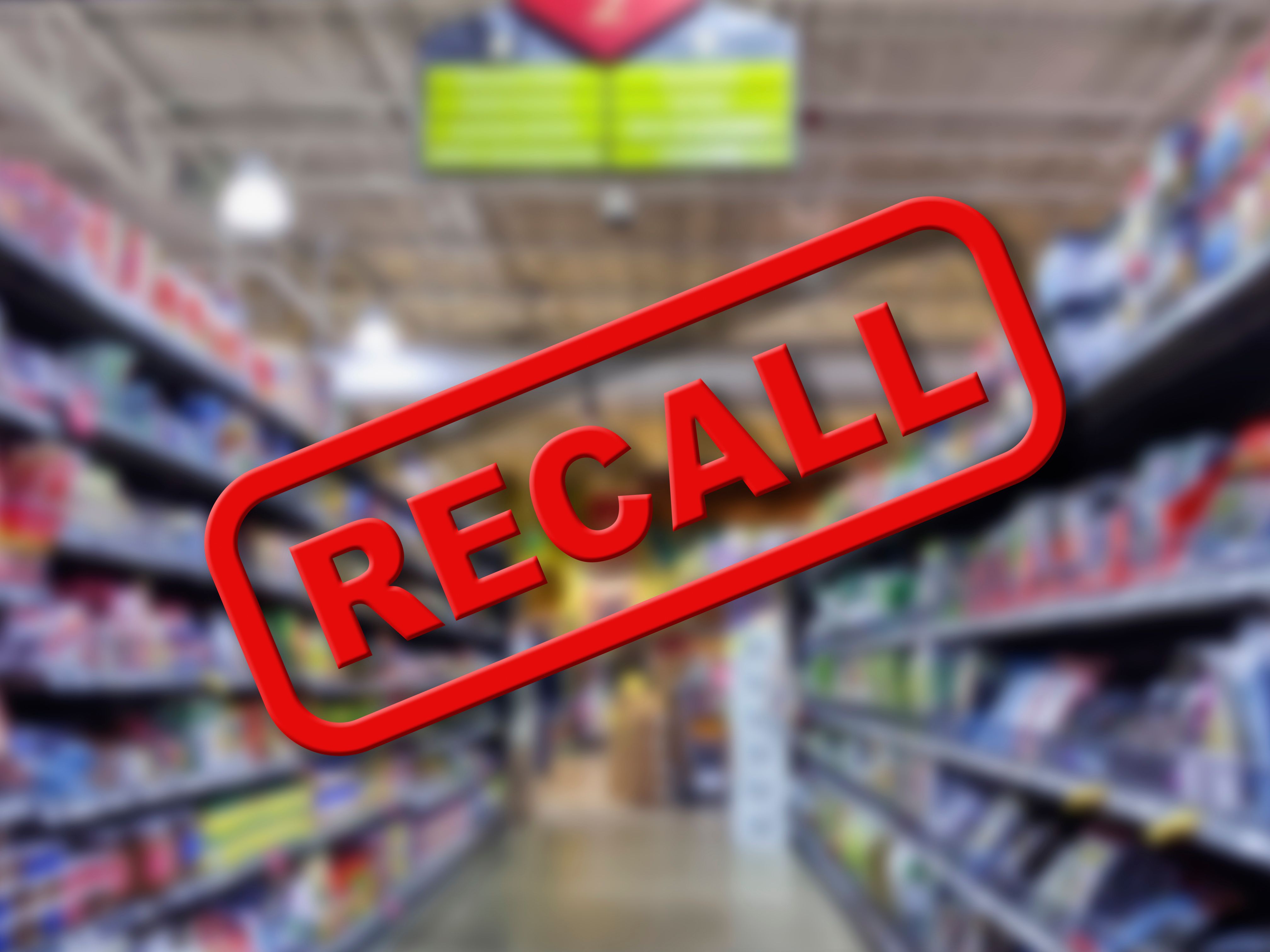News
Article
Spike in Food Recalls Sparks Consumer Concern Amid Foodborne Illness Outbreaks
Author(s):
Key Takeaways
- Recent food recalls involve salmonella in cucumbers, E. coli in onions, and listeria in ready-to-eat meats, affecting multiple states and resulting in hospitalizations and deaths.
- The FDA and USDA regulate food recalls, classifying them into three classes based on severity, with Class I being the most serious.
Recent surges in FDA and US Department of Agriculture food recalls due to salmonella, Escherichia coli, and listeria outbreaks highlight ongoing food safety challenges and advancements in pathogen detection technology.
Consumers are on high alert due to a recent surge in food recalls by the FDA and US Department of Agriculture (USDA), driven by alarming salmonella, Escherichia coli, and listeria outbreaks.
Recent food recall surges due to salmonella, E coli, and listeria outbreaks highlight ongoing food safety challenges and advancements in pathogen detection technology. | Image Credit: ColleenMichaels - stock.adobe.com

Recent Foodborne Illness Outbreaks
The most recent salmonella outbreak was found in cucumbers. The CDC reported that cucumbers grown by Agrotato, SA de CV in Sonora, Mexico, may be contaminated, including those from SunFed Produce LLC.1
Consequently, SunFed recalled all sizes of whole fresh American cucumbers packaged in bulk cardboard containers for retail or food service on November 27, 2024. They were sold from October 12 to November 26 in stores across 26 states, resulting in 68 people from 19 states being infected as of November 26. No deaths have been reported, but 18 were hospitalized.
Additionally, a recent widespread E coli outbreak was linked to fresh slivered onions in Quarter Pounders served at McDonald’s.2 California-based Taylor Farms supplied the onions to McDonald’s restaurants across 14 states; however, they were pulled when the outbreak was announced in late October. The outbreak ended on December 3, but the CDC reported it caused 104 E coli cases, 34 hospitalizations, and 1 death across all 14 states.
Lastly, numerous listeria outbreaks have been reported among products like frozen waffles, smoked salmon, and deli meat. A major multistate outbreak resulted in a recall on November 9 of about 4589 pounds of ready-to-eat meat and poultry products from Yu Shang Food Inc.3 Produced between October 21 and October 27, these products caused 11 listeria cases, 9 hospitalizations, and 1 death across 4 states.
Yu Shang Food Inc expanded its recall on November 21, including an additional 67,651 pounds of products and extending the production dates to anything before October 28, 2024. These products caused 8 additional listeria cases, 8 hospitalizations, and 1 death across 4 more states.4
Understanding Foodborne Illnesses and Food Recalls
The CDC reported that, annually, foodborne pathogens cause 48 million illnesses; 128,000 hospitalizations; and 3000 deaths.5 The most common symptoms of food poisoning include a fever over 102 °F, dehydration, bloody diarrhea, and frequent vomiting.6
Also, the FDA estimated that 2% to 3% of all foodborne illnesses lead to serious secondary long-term illnesses.5 More specifically, certain E coli strains can cause kidney failure in young children and infants, salmonella can lead to reactive arthritis, and listeria can cause meningitis and stillbirths.
The FDA regulates all foods except meat, poultry, and processed egg products7; these are regulated by the USDA. The agencies issue food recalls to remove products from the market that violate their respective regulations. Something may be recalled because of disease contamination, the presence of foreign objects, or failure to list a major allergen.
The FDA and USDA each have product recall class definitions, but they follow the same general rule: Class I is the most serious or dangerous, Class II is potentially dangerous, and Class III is the least dangerous.8 Regardless of the class, the agencies instruct consumers to take each recall seriously and follow their instructions.
Consumers can often return recalled products for a full refund.7 If not, they should be disposed of properly; contaminated products should be securely wrapped before being placed in the trash. Also, surfaces that touch contaminated products should be washed and sanitized with a solution of 1 tablespoon of chlorine bleach to 1 gallon of hot water and dried with a clean cloth.
Outbreak Trends and Future Efforts
Despite the recent uptick in food recalls, the FDA claimed that the number was not unusually high this past year.9 There were 179 Class I recalls for the fiscal year that ended in September, which is up from 145 Class I recalls in 2023 but less than the 185 recorded in 2022.
Similarly, CDC numbers indicated that the number of high-profile recalls has increased only slightly from last year. It has issued 10 “multistate foodborne outbreak notices” so far, but there were 9 notices in 2023.
Darin Detwiler, a food and safety expert and professor at Northeastern University, attributed the recent recall increase to various factors, including improvements in pathogen testing technology.10 For example, molecular-based panel tests can be run by hospitals and clinical labs for various germs instead of one-off tests for specific pathogens.
Also, the CDC’s PulseNet lab network switched to whole genome sequencing, which helps link different cases together; this can be crucial for uncovering common foods eaten by sick people in an outbreak. Consequently, more cases are being caught in a more timely manner, indicating food safety improvements.
Additionally, the FDA is undergoing an organizational shift aimed at streamlining its food safety processes, which may result in temporary workflow disruptions. On October 1, the unified Human Foods Program went into effect.11 Under this new initiative, the FDA will work to prevent foodborne illness, reduce diet-related chronic diseases, and ensure the safety of chemicals in food. The program is designed to prioritize areas where interventions can most effectively promote disease prevention and enhance wellness.
“We must work in close coordination with federal partners; state, local, tribal, and territorial regulatory entities; agricultural departments; and international regulatory counterparts to prevent and rapidly respond to foodborne illness outbreaks,” Deputy Commissioner for Human Foods Jim Jones said in a press release.12 “I’m committed to expanding our collaboration with these stakeholders to further reduce the potential for food contamination.”
Resources
1. CDC warns of a salmonella outbreak linked to cucumbers. News release. CDC. November 29, 2024. Accessed December 6, 2024. https://www.cdc.gov/media/releases/2024/a1129-salmonella-outbreak.html
2. Outbreak investigation of E. coli O157: onions (October 2024). FDA. Updated December 3, 2024. Accessed December 6, 2024. https://www.fda.gov/food/outbreaks-foodborne-illness/outbreak-investigation-e-coli-o157h7-onions-october-2024?randparam=545583
3. Yu Shang Food Inc. recalls ready-to-eat meat and poultry products due to possible listeria contamination. USDA. Updated November 21, 2024. Accessed December 6, 2024. https://www.fsis.usda.gov/recalls-alerts/yu-shang-food-inc--recalls-ready-eat-meat-and-poultry-products-due-possible-listeria
4. Listeria outbreak linked to ready-to-eat meat and poultry products. CDC. Updated December 5, 2024. Accessed December 6, 2024. https://www.cdc.gov/listeria/outbreaks/meat-and-poultry-products-11-24.html
5. About foodborne illness. Partnership for Food Safety Education. Accessed December 6, 2024. https://www.fightbac.org/food-poisoning/about-foodborne-illness/
6. Symptoms of food poisoning. CDC. April 29, 2024. Accessed December 6, 2024. https://www.cdc.gov/food-safety/signs-symptoms/index.html
7. Food recalls: what you need to know. CDC. Accessed December 6, 2024. https://www.fda.gov/food/buy-store-serve-safe-food/food-recalls-what-you-need-know
8. Food recall classes. LA County Public Health. Accessed December 6, 2024. http://www.publichealth.lacounty.gov/eh/safety/food-recalls/ref/recall-classes.htm#:~:text=While%20both%20the%20FDA%20and,dangerous%20and%203%20%3D%20least%20dangerous.
9. Tin A. Are food recalls and outbreaks on the rise? FDA says US food supply still “one of the safest in the world.” CBS News. Updated November 21, 2024. Accessed December 6, 2024. https://www.cbsnews.com/news/food-recalls-e-coli-listeria-outbreaks-fda/
10. Kayata E. Now carrots too? Why there have been so many food recalls lately. Northeastern Global News. November 18, 2024. Accessed December 6, 2024. https://news.northeastern.edu/2024/11/18/food-recall-increase-carrot-e-coli/
11. FDA’s unified Human Foods Program, new model for field operations, and other modernization efforts go into effect. News release. FDA. October 1, 2024. Accessed December 6, 2024. https://www.fda.gov/news-events/press-announcements/fdas-unified-human-foods-program-new-model-field-operations-and-other-modernization-efforts-go
12. FDA deputy commissioner for human foods commits to fulfilling vision of proposed program. News release. FDA. October 19, 2024. Accessed December 6, 2024. https://www.fda.gov/news-events/press-announcements/fda-deputy-commissioner-human-foods-commits-fulfilling-vision-proposed-program





